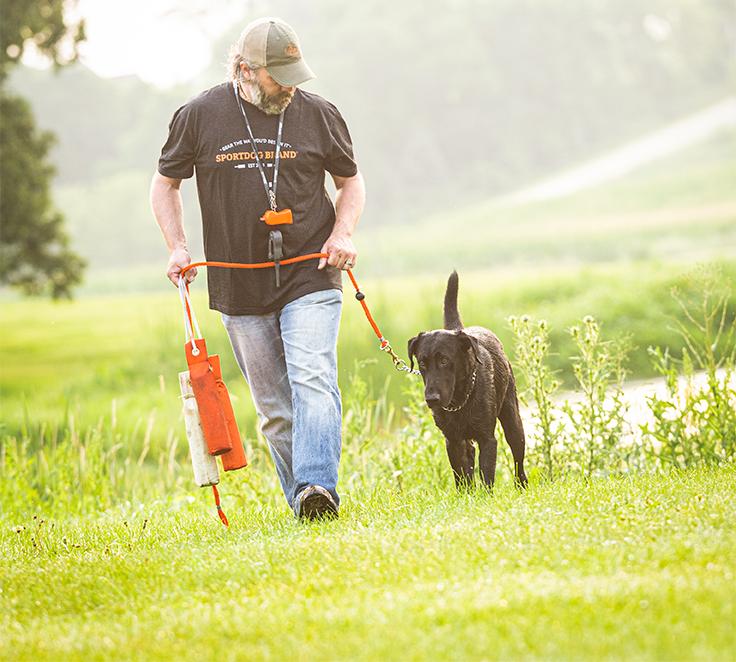
Straight Talk About Protein for Hunting Dogs
Posted by The SportDOG StaffAs I travel across the country attending field trials, visiting kennels and hunting, I get a lot of questions about dog food for some reason. One topic that stimulates many questions is protein quality and protein’s role in dog nutrition.
Protein is required by the body for two reasons: To provide essential amino acids that may be used for protein synthesis in the body (e.g. to make muscle) and to supply nitrogen for essential body functions. Animals do not have a minimum requirement for protein, per se; they just need the amino acids that protein provides. Since these amino acids are normally provided in the diet via protein, that is how we talk about this nutrient class.
Four nutritional factors affect protein requirement in the dog:
- Protein quality: As protein quality increases, the level of protein required in the diet decreases.
- Amino acid composition: As amino acid composition improves, required dietary protein levels decrease; the wider range of amino acids in a protein source, the less the dog has to consume to function optimally.
- Protein digestibility: As protein digestibility increases, required protein levels in the diet decrease; if a protein source is highly digestible, the dog can get more amino acids per bite, so less may be required in the diet.
- Energy density of the food: As energy levels increase in a food, protein requirement as a percentage of the diet increases. This is because high energy foods may lead to decreased volume of food eaten. The dog just does not have to eat as much of these foods to meet its energy needs which, normally, determines the volume of food a dog eats each day. As a result, we need to ensure the actual level of amino acids is provided, so we need to increase the percentage of protein in the food.
In addition to these dietary factors, issues like the dog’s activity level, body condition and prior nutritional level affect the dietary protein levels required. Hard-hunting dogs need more protein than a couch potato. Years ago, the National Research Council and the American Feed Control Officials studied the minimum protein requirements for dogs. After several years of study and debate, the minimum of 18 percent protein on an “as fed” basis was set for most dogs and minimum of 22 percent was set as the minimum for growing dogs and pregnant or lactating bitches.
For field trial and hunting dogs, there are benefits to higher levels of dietary protein. In studies published by the Iams Company, four groups of dogs were put through a rigorous training protocol similar to what we use in conditioning bird dogs. The groups were fed diets that were exactly the same except in protein levels. The diets contained 16, 24, 32 and 40 percent dietary protein levels as fed respectively.
Of the dogs fed the 16 percent protein food, none completed the training period without having at least one muscle or tendon injury. Two of the dogs fed the 24 percent protein food had injuries. But, importantly, none of the dogs fed a diet containing 32 or 40 percent dietary protein had an injury during training.
In addition, as the dietary protein levels increased, blood plasma volume also increased, as did the red blood cell mass. Hence the recommendation that athletic performance-type dogs be fed a diet with 30 percent dietary protein levels on an “as fed” basis. (That means what the Guaranteed Analysis says on the bag.)
The source of the protein in the food is a critical parameter as well as the level. I will discuss that topic in my next article on canine nutrition.
Always check your local and state regulations related to dog training and the use of game birds on private and public property.
Related Articles

Rigors of a Tough Hunting Season
by The SportDOG Staff
During the 2009-2010 hunting season, most of us endured our most interesting upland season in quite some time. The entire country experienced unique weather conditions this fall and winter. Hard winters often turn most of our thoughts and concerns towards, "how are the birds going to make it"? A question...

Fitness Training for Your Gun Dog - Video
by The SportDOG Staff
In this SportDOG Brand Training Tip (originally aired on Pheasants Forever Television) SportDOG Senior Pro Staffer Tom Dokken gives tips on getting yourself and your gun dog in shape for the hunting season.
